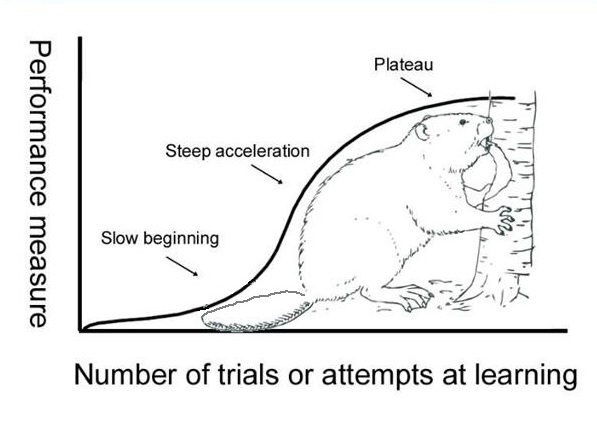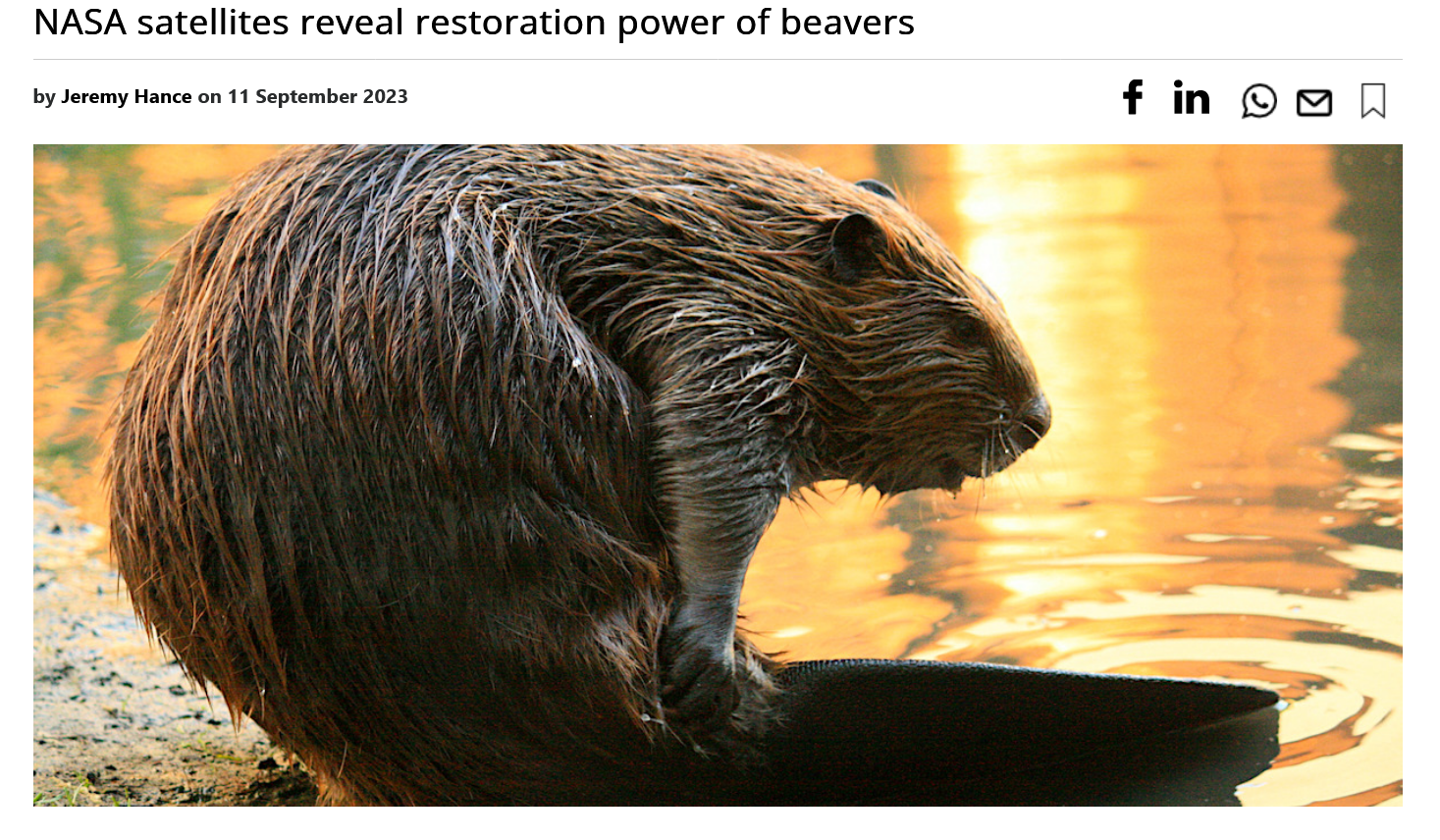Wow! That popular little Stanford beaver has made it all the way to the LA Times. Congratulations Bill!
Bill Leikam was reviewing footage from a wildlife camera he placed along a Palo Alto creekbed recently when something unfamiliar scampered across the screen.
“I have enough experience with the wildlife out there to be able to identify every one of them just by their movement — this one had me baffled,” said Leikam, president and co-founder of the Urban Wildlife Research Project. “I’d never seen a critter out there moving like this little guy did.”
Leikam, who is better known as The Fox Guy, watched the clip over and over. Eventually, he recognized the mysterious creature as a critically important species that has long been missing from his beloved Baylands — a mammal that California wildlife officials have hailed as a “climate hero.”
“I just stopped and said to myself, ‘Is that a baby beaver?’” Leikam said.
It’s always good news when folks are excited about beavers. Never mind that Bill actually sent this video to beaver expert Heidi Perryman for verification and SHE confirmed it was a beaver. We don’t have any time to talk to people who actually observe beavers. There’s only time to talk to people that STUDY beavers.
The kit sighting in Matadero Creek has been confirmed by local wildlife experts and even a historical ecologist. It marks the first time in decades — if not more than a century — that a beaver colony has taken up residence in this region south of the San Francisco Bay.
For state wildlife officials and “beaver believers,” the camera trap images are cause for celebration. After being hunted and harassed for hundreds of years, the North American beaver is poised to make a comeback in the Golden State, and its resurgence could help fight certain effects of climate change.
While there have been other recent reports of beaver activity across the Bay Area, Leikam said this is the first concrete evidence. More importantly, it suggests a successful re-population of the area.
Last fall, Leikam spotted a pair of beavers along Matadero Creek and hoped they would settle in and create a beaver pup.
“It’s unique that they’re establishing,” said Emily Fairfax, a longtime California beaver researcher who now works as an associate professor at the University of Minnesota. “This is a stamp of approval to have a beaver move in.”
Since the mid- to late 1800s, when California beavers were pushed nearly to extinction by the fur trade, the semi-aquatic rodents have made small inroads into the Bay Area and other regions — a process complicated by the lining of tributaries with concrete, making them inhospitable for the flat-tailed animal.
Hi Rick! Nice to see them discuss your work. So we have discussions with the cancer researcher and the man who studies foxes, who else can we get?
“It’s one thing if you find a dispersing beaver somewhere, it’s a totally different ballgame when you find that you have an established, reproducing population,” said Valerie Cook, manager of the California Department of Fish and Wildlife’s newly established Beaver Restoration Program. “It really reflects that shift in perception and people starting to recognize that these are not a nuisance species.”
For decades, developers, municipalities and farmers focused on beavers as a problem that required mitigation or removal. Now, the species known as Castor canadensis is seen as offering myriad benefits: It can help to mitigate drought and wildfires through natural water management; it is considered a keystone species for its ability to foster biodiversity; and it can restore habitat through its ecosystem engineering.
“They can create wetlands in basically any ecosystem,” said Fairfax, who described beavers as a free workforce that California has yet to take full advantage of. “The fires are catastrophic and the droughts are widespread and unrelenting — it feels like we have to exhaust all options.”
While experts have known the advantages of beavers for decades — a 1950 Outdoor California magazine highlighted a short-lived effort to move beavers via parachute to improve water supplies — it’s only in the last year that state officials have formed a new beaver restoration program.
Oh excellent! Tdhey got Valerie to weigh in! Did I mention that her other job is head of the nutria eradication program?
“California is paving a pathway forward for beavers to have a much better future in this state and to actually be part of dealing with things like droughts and floods and wildfires,” Fairfax said.
There are no population estimates for California beavers, but Fairfax said the numbers statewide are “relatively tiny.”
“Everywhere could use more,” she said. Other western states, such as Colorado and Utah, have supported beavers more aggressively in the last few years, and Fairfax said she is hopeful California can begin to catch up.
For Leikam, who has been monitoring this area of Palo Alto Baylands for more than a decade, the new beaver offspring is the latest sign of an improving ecosystem.
“I’m optimistic about wildlife,” said Leikam, who has spent years tracking gray foxes.
While he has yet to see evidence that this new beaver family is building a dam — he suspects they are living in deep burrows within the creek’s bank — he’s hopeful he might see one in the future, which would support a host of new animals.
“This new beaver family is really imdportant if they survive and reproduce,” said Lanman,d who hopes they expand their range in the Bay Area. “It’s just remarkable.”
Good, You’ve spoken to the hydrologist too. That’s a complete set of folks that haven’t spent a significant portion of their life observing beavers. You know what I would have said if they asked me? In the last decade 34 of the 58 counties in California have sought depredation permits for permission to kill beaver so I’m going to say if there are enough beavers to kill we can probably assume they are reproducing in the area.
Just like they were in Martinez.
Welcome to the neighborhood little Matadero creek beaver.
 A CITY is spending thousands to get rid of a beaver after officials raised fears the rodent could cause flooding.
A CITY is spending thousands to get rid of a beaver after officials raised fears the rodent could cause flooding.










































